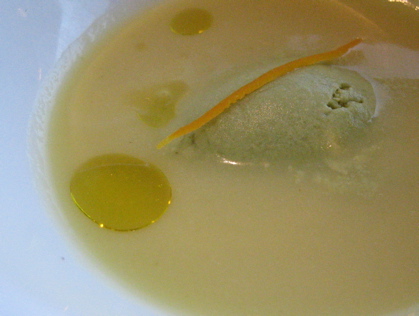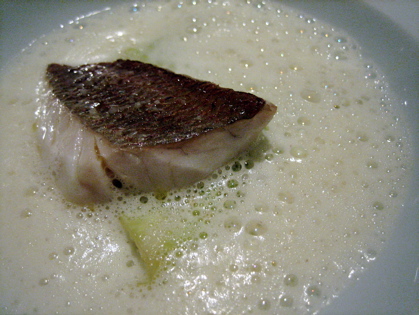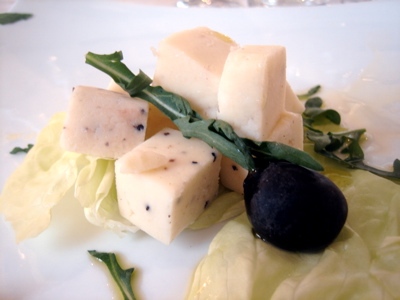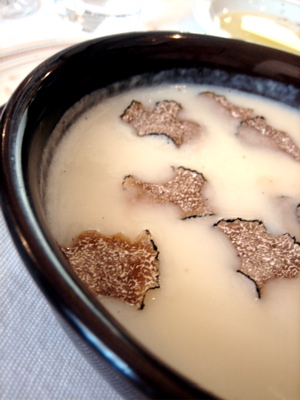I know I’ve mentioned in several posts now that there are imminent updates galore, but I’d like to take a moment to excuse my spotty posting record by saying that in the past four weeks, Jon and I have travelled to the French Riviera, Paris, DC and Lisbon. I don’t expect a lot of sympathy, but all this travel has tired me out. It’s also meant that I haven’t written as regularly as I like to, so to catch up a bit – when I last wrote, it was about my memorable dinner at Mirazur.
Keisuke Matsushima (22, rue de France, Nice) and Le Pre Catelan (Bois de Boulogne, Paris) were no slouches, either, but our meal at the former, while delicious, lacked the ambition on display at Mirazur, and the pace at the latter left me feeling as if I’d just done a lot of hard work. At 140 euros a person for the Menu Printemps tasting menu at Le Pre Catelan, I expected a little more joy and leisure.
Keisuke Matushima is a small, sleek restaurant located on a busy pedestrian street in Nice, not far from the Place Massena. At night, the dark wood, minimalist décor feels glam. Even before we’d arrived at the restaurant, I was impressed by the service. I’d played phone tag a few times with the reservations desk, and I had my doubts about leaving voicemail, but the restaurant repeatedly followed up with me until we’d confirmed our 9 pm reservation on a Saturday.
We ordered the “regular” prix fixe menu (70 euros per person), rather than the chef’s tasting menu, because we’d already loaded up on socca earlier in the evening. Still, I figured the regular menu would mean just fewer courses than what was on the chef’s tasting menu.
I enjoyed my meal there. The service was attentive and friendly, and I liked that the servers spoke to me in French, mostly because I consider myself a decent French speaker. The restaurant has at most 20 tables, so it’s a cozy, buzzing place to have dinner. Jon and I were introduced to the joys of Ruinart champagne, and our food, while not super exciting, was beautifully prepared. Take, for example, our fish course: wild salmon filet, seared so that the center was still cool, served with mushrooms, mizuna and a mussel broth. Delicious, but not exactly “wow, how did they do that.” Same with a memorably good custard with strawberry coulis served for dessert.
We were a little overzealous on the wine, so our tab for two totalled 240 euros, but at 70 euros a person for the food, Keisuke Matsushima is definitely worth a visit while in Nice. For a similar price, though, I was wowed by Mirazur. Menton is kind of a schlepp, but I think it’s worth spending the 40 minutes to get there from Nice.
As for Le Pre Catelan, Jon and I had lunch there while in Paris for a weekend. For our fellow metro-lovers, I’ll point out that Place Dauphine is the closest metro stop, but that doesn’t mean the metro is anywhere close to the restaurant. Le Pre Catelan is located in the heart of the Bois de Boulogne, so it’s a 30-minute walk from the metro station to the restaurant. For about 6 euros, you can flag a taxi from the Place Dauphine to the restaurant, and after our huge lunch (there is no other kind at a 3-star, I suppose), we enjoyed the walk through the park back to the metro.
Frederic Anton is the chef at Le Pre Catelan. I didn’t choose the restaurant based on any knowledge of the chef, though. Rather, the restaurant was promoted this year from 2 to 3 Michelin stars, and I’m a sucker for a dining room on the rise. (I like strivers more than I like incumbents).
The dining room was only half full when we arrived at 1:30 for lunch. The main dining room is all high-ceilinged, belle époque sumptuousness: tall mirrors, carved friezes, and tasteful pale green color scheme. Elaborate without being garish and suffocating. We ended up in the terrace room (see photo at top of post) with a view of the garden, which was nice because the day was bright and sunny. Our table was close to the server station, which is an experience similar to sitting in front of the lifeguard chair when you’re at the beach – you feel a little too watched over.
In addition to the a la carte option, there were three prix fixe choices at Le Pre Catelan – a lunch menu for 70 euros, a Menu Printemps (“spring menu”) for 140 euros, and a super-star tasting menu for 190 euros. Being the middle-ground folks that we are, Jon and I chose the Menu Printemps, which turned out to be a crazy choice for lunch.
First, the portion sizes were big for a tasting menu, so believe it or not (and I think this is the first time in the history of dining that an American has complained that portion size at a French restaurant was too big), I thought the tasting menu was too much food.
And second, the pace of our meal was way too fast (e.g., three large courses and an amuse or two were served in less than an hour). I felt like a contestant in a food eating contest. When the cheese cart rolled out around the 1.5-hour mark, we had to ask the servers to give us a little more time to rest. As creative and well-prepared as the food was, our lunch started to feel like hard work (yes, this is probably where you tell me I have lost all contact with reality).
I think the restaurant was in a rush to get us, the last of lunch crowd, out of the restaurant, which I can sort of understand, but then don’t make these elaborate tasting menus available at lunch.
So, on to the food: Amuse: Spring pea soup with a nutty, creamy foam. Ahh, of course. Peas and foam. The pretty pea green soup is poured onto your plate of foam at the table. It’s light and heavy at the same time.
L’Etrille et le Tourteau: Pretty much three dishes in one. The L’Etrille (currycomb) crab meat is seasoned and then stuffed back into the shell, covered in a savoury gelee with salty, creamy Aquitaine caviar, and voila – a dish that feels like a summer picnic by the sea. The crab soup with a fennel foam was tasty and decadent because of the spoonful of cream and caviar I stirred in, but the roasted tourteau was not very good despite my best efforts to appreciate it. The tourteau was mixed with orange zest and wrapped in seawood so that it looked like maki before you slice it up into pieces. Despite dipping pieces of my roll into the accompanying orange sauce, it still tasted flavourless and a little dry. Still, two of three is pretty good.
La Langoustine: This course was another three-fer. There was langoustine wrapped in a ravioli skin and served in a seafood broth foam. The langoustine was sweet and the foam was rich, which made for the ultimate won ton soup, I suppose. The nems de langoustine (i.e., langoustine spring rolls) were good, but I didn’t think it was especially creative as much as it was especially well-prepared. The langoustines made it luxurious, but at the end of the day, the nems were nems. The one part of the nem that I still can’t figure out is the romaine lettuce “jus” that accompanied the nems in an espresso cup. I tried using it as a dip, and then I tried sipping the romaine, neither of which resulted in much beyond a slight vegetal aroma.
Le Ris de Veau: Sweetbreads. Rich and creamy and served in yet another generous portion – two “disks” of sweet breads. One of the sweetbreads was covered in earthy, juicy morels, and the other one had been prepared with a soubise au parmesan (covered in a cheesy sauce, basically). This course defeated me. I couldn’t take another bite, and if you’ve ever seen me eat, you know I’m not easily overwhelmed by large servings of food.
Les Fromages Fermiers: Farm cheese. The cheese cart was out of control. As I mentioned above, this is where we needed a break, so in response to our request, we got a 10-minute respite from the onslaught of food. Like a good endurance-sport athlete, I reached deep inside to make room for a few of the tempting goat cheeses – aged, fresh, ashed. And I also couldn’t resist the molten-looking Saint Marcellin cheese. They were all good, but the chevre deserves special mention for its refreshing citrus notes.
Le Café “Expresso” dessert: This course was both pretty and delicious. Inside a sugar candy cylinder-shaped shell, there are layers of sabayon, chocolate ganache, ice crème, and crushed almonds. It’s the best coffee-and-chocolate-flavored sundae of your life in a neat tower.
I had no space for the coffee or petits fours that were offered. It was about 4 pm when we left, which means we’d somehow managed to eat a 4-hour meal in just under 2.5 hours there. I think we set a record for greatest number of calories consumed per hour.
At 340 euros for two, I was disappointed that I left lunch feeling rushed and uncomfortably stuffed. Perhaps we should have gone for dinner, but we’d made our reservations too last-minute for a Friday-night seating. In any case, I’d go back to L’Astrance before I’d return to Le Pre Catelan.




































